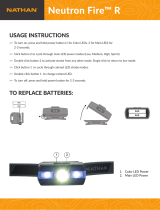
ii 83840-546-03 B
User’s Guide—OpenStack Deployment with VXLAN Configuration
QLogic 3400, 8400, and 45000 Series Ethernet Adapters
This document is provided for informational purposes only and may contain errors. QLogic reserves the right, without
notice, to make changes to this document or in product design or specifications. QLogic disclaims any warranty of any
kind, expressed or implied, and does not guarantee that any results or performance described in the document will be
achieved by you. All statements regarding QLogic’s future direction and intent are subject to change or withdrawal
without notice and represent goals and objectives only.
Document Revision History
Rev 01, May 15, 2015
Rev 02, May 22, 2015
Rev 03, March 22, 2016
Rev A, April 19, 2016
Rev B, August 29, 2016
Changes Sections Affected
Added Liberty and Mitaka to the applicable Open-
Stack platforms.
Added a footnote associating 3400/8400/45000
Series Adapters with the 57800 Series Adapters
and QL4521x adapters.
“Intended Audience” on page v
Added Liberty and Mitaka to the applicable Open-
Stack platforms.
Added a NOTE indicating that support for the
45000 Series is limited to the QL4521x adapters.
“Audience” on page 1
In the first bullet, added a NOTE indicating that
support for the 45000 Series is limited to the
QL4521x adapters.
In the third bullet, added links to information about
OpenStack installation for Linux for Liberty and
Mitaka.
“Prerequisites” on page 3
In Step 1, added qualifiers for Juno, Kilo, Liberty,
and Mitaka to the editing of the /etc/neu-
tron/plugins/ml2/ml2_conf.ini and the
/etc/neutron/plugins/ml2/open-
vswitch_agent.ini files.
“Network Node Configuration” on page 6
In Step 1, added qualifiers for Juno, Kilo, Liberty,
and Mitaka to the editing of the /etc/neu-
tron/plugins/ml2/ml2_conf.ini and the
/etc/neutron/plugins/ml2/open-
vswitch_agent.ini files.
“Compute Node Configuration (Compute1 and
Compute2)” on page 7






















